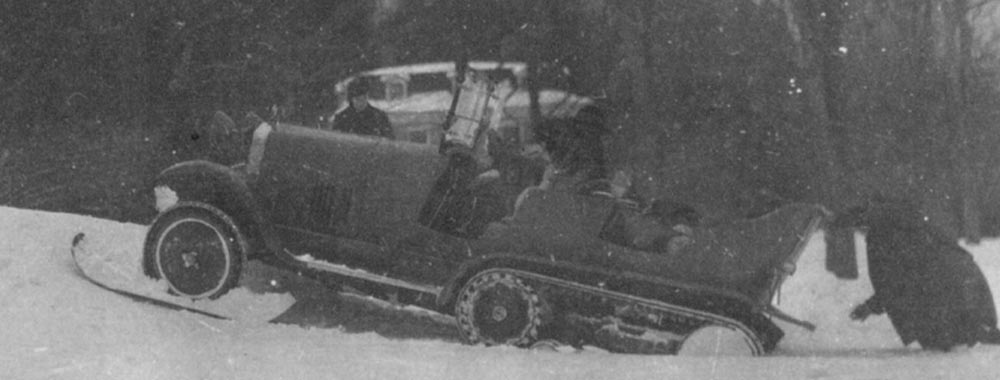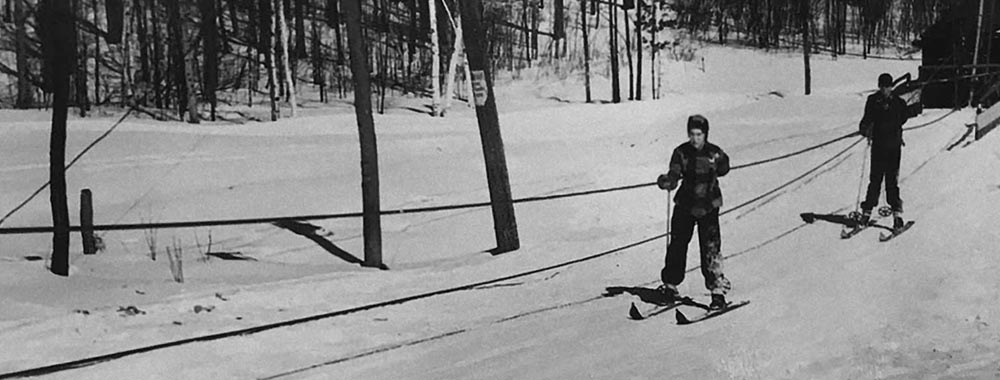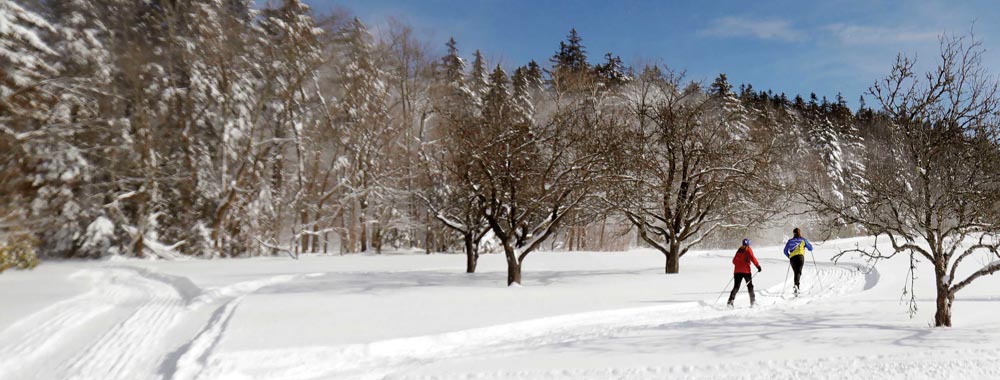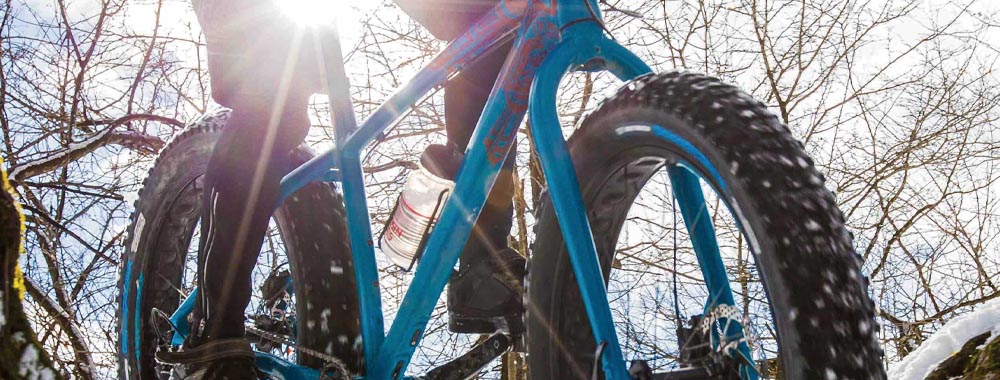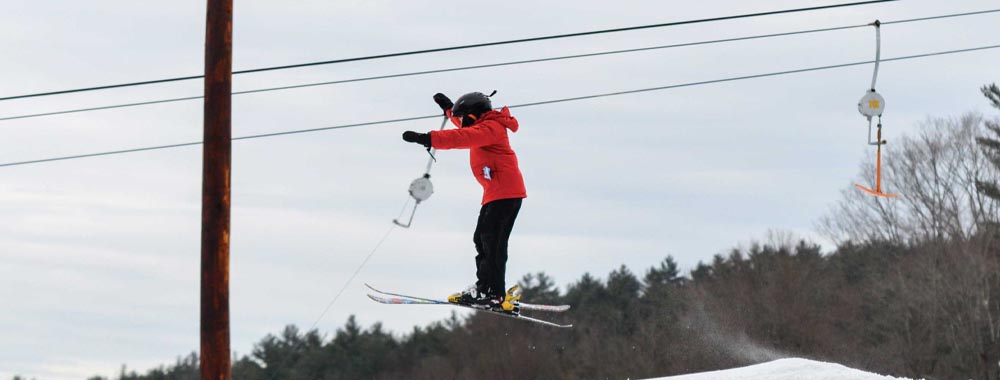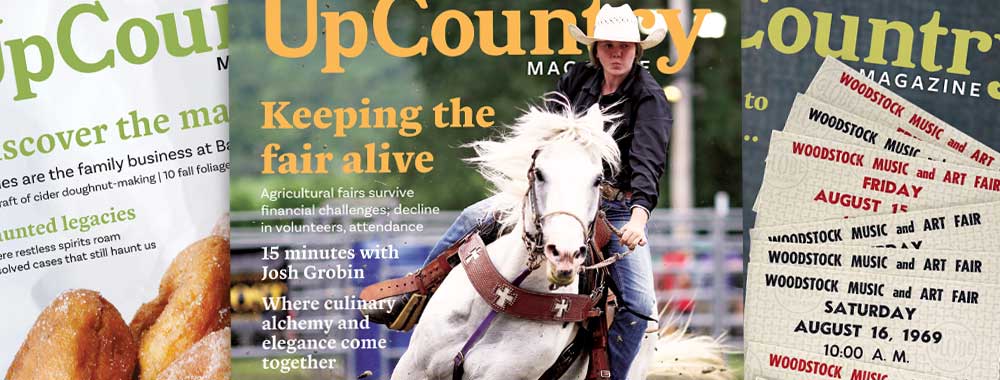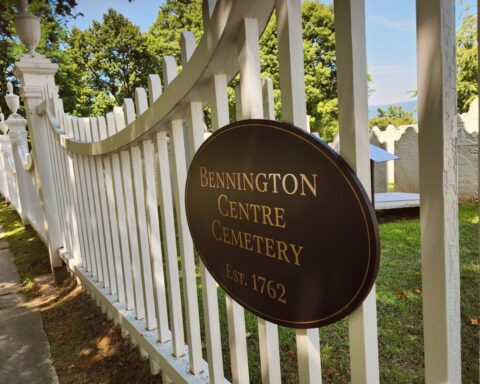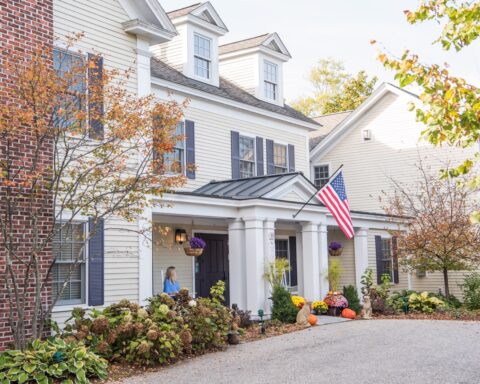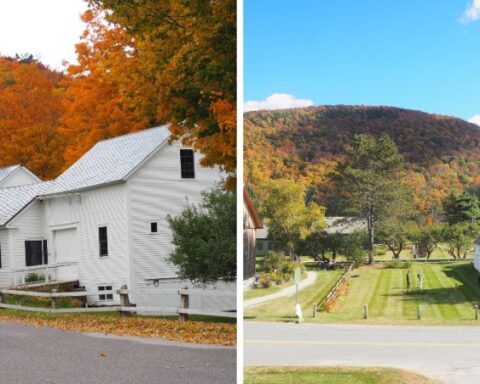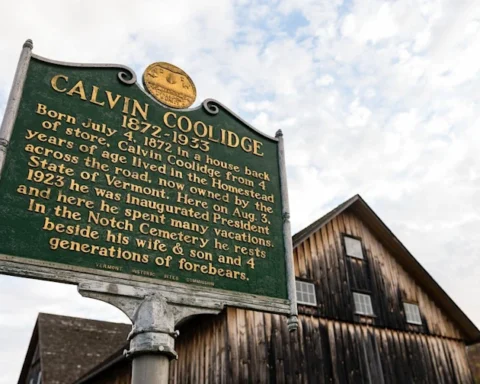
By Bernard A. Drew
LENOX, Mass.
Most Gilded Age Berkshire cottagers scattered south or overseas in the cold months. Cortlandt Field Bishop, on the contrary, embraced snow. He named his last mansion Winter Palace, after all.
Bishop (1870-1935) and his younger brother, David Wolfe Bishop Jr. (1875-1911), were handsome, sharp, educated, adventurous and energetic. David eventually established his primary residence in France. Cortlandt was sometimes in Europe, sometimes New York, often in Lenox.
American automakers were in their infancies in the early 1900s. Early Duryeas, Appersons and Waverlys weren’t always reliable. Impatient cottagers who traveled abroad purchased motors and brought them back with them.
The Bishops, in the vanguard of automobile enthusiasts, brought back from France the first motorized vehicles seen in Lenox — each had an 1898 De Dion-Bouton three-wheeler “run by a motor of one and 1.75-horsepower generated by benzine vapor exploded by an electric spark,” The Pittsfield Journal wrote. “There is a tank for the benzine in which 12 quarts can be stored. This capacity is capable of running the machine 100 miles over smooth roads or 75 miles over hilly and rough roads, such as abound about Lenox. The mobile will climb a 10 degree hill with great rapidity. The motor is started by the pedals.”
The Bishop siblings, heirs to real estate and tobacco fortunes, knew no obstacle in their enjoyment of life — except posted speed limits. They were a bane on the roads of Lenox. Soon, each had a 30-horsepower Panhard et Levassor runabout in the Lenox garage at the family estate, Interlaken. David liked to race his “White Ghost,” or his Société Mors, nicknamed “Red Devil.”
David Bishop, the scorcher (a term for those who drove at high rates of speed, often recklessly), redeemed his reputation somewhat when, during a heavy snowstorm one December, he “assisted the selectmen clearing and opening the roads yesterday, using his Panchard [sic] automobile which won the endurance race from New York to Buffalo last September,” the North Adams Transcript wrote.

Cortlandt, an off-and-on force in Lenox all his life, was outspoken, strong-willed, often brash in the midst of his eccentricities. On one occasion, “after he had almost collided with Mrs. William [Emily Vanderbilt] Sloane as she drove for church, Mr. Sloane asked him reprovingly what would he have done, had he killed her? To which he promptly rejoined: ‘I would at once have written you out a check for $5,000,’” neighbor Olive A. Colton recalled.
Sloane didn’t appreciate Bishop’s humor.
Though Bishop cherished ripping through the countryside in virile French machines and had not a few discussions with police and fines from judges, he was less a scorcher, more a quester and promoter. He sought to conquer all roads, all mountains, all deserts, in all nations, in all conditions. He explored Berkshire, Litchfield, Conn. and Bennington, Vt. back roads in various of his petrolettes.
Cortlandt blended several estates to amass the largest land holding in Lenox — not to mention, he bought and sold apartment and office buildings in Manhattan; owned and merged the American Art Association and Anderson Galleries (now Parke-Bernet Galleries); and published the Paris Times (1924-1929). He organized the Aero Club of America’s first international balloon race in this country: contestants flew from Pittsfield in 1906.
Bishop married Amy Bend (1870-1957) in 1899, and thus began her life on the road with her husband. In the vicinity of Naples, Italy, in 1902, they encountered hostile villagers, who attacked them with long and heavy clubs. Horseless Age wrote, “Both Mr. Bishop and his wife were somewhat severely bruised, and as the automobile was only traveling at the rate of 3 or 4 miles an hour, and no one was touched or impeded in the tunnel, that unfortunate traveler cannot conceive the object of the assault.”
Bishop admitted he took chances.
“I wonder how I ever dared to go where we did with that car,” he said in 1923, referring to one of his early gasmobiles. “Often I would return home two or three days after starting out with farmers’ oxen dragging the car. I could tell you of a dozen houses near which we became stalled and had to spend the night.”
Bishop made sure the press heard — and printed — accounts of his motorcar adventures.
“Automobile trip in the Sahara Desert,” The New York Times headlined a story in 1904. “Lenox Man Drives a Motor Car in the Alps,” The Boston Globe touted the next year. Bishop conquered the Andes. He bested the American and Canadian Rockies. He had penetrated the deserts of California and meandered the Sahara.
He ascended Mount Greylock in wheeled vehicles — and had one teeter-near-the-precipice experience. He yearned to try a winter ascent. But he needed a real snow machine.
Bishop returned from abroad in 1922 with “the first of a new type of motor pleasure cars built on the tank-type principle, which, he said, were being developed for the late Czar of Russia just before his downfall. The car carries five passengers and can climb over all obstructions, go through snowdrifts 20-feet high, skate on the ice and plow through sand hills at the rate of 10 miles an hour. On the open road 20 miles an hour is its speed, and, perfected under the French government, it is the first of its kind to be allowed to go out of France. Already, he said, 30 have been sent to Timbuktu, Africa, for use in the desert by the French Army. He proposes to speed it down Broadway after the first heavy snowstorm,” The New York Times wrote.
Bishop’s open-seat snow-cat, essentially a Citroën roadster outfitted with tracks on the rear, skis on front, was called the Citroën-Kégresse-Hinstin K1 Autoneige (as distinct from the Autochenille, or caterpillar, made for dry off-road recreationists). Bishop imported his snowmobile ahead of the company establishing a retail presence in the United States.
Bishop, by now, left the driving to his chauffeur, Felicien Harrer. Except for the French tractor. Bishop took the wheel in an early test, The Springfield Republican reported, “a run from ‘The Maples’ to Pittsfield, a distance of a little over 10 miles, over a badly-drifted and choppy road, with trucks and autos here and there around which the machine had to be driven. On good stretches, a speed of about 8 miles an hour was struck, but could not be maintained because of the bad roads and obstacles.”
French engineer Adolphe Kégresse had devised a half-track vehicle in 1913 — a Rolls-Royce conversion — while in charge of Nicholas II’s garage. In 1920, Kégresse brought his concept to French automaker Andre Citroën, who was already making Mors and Citroën autos and would eventually absorb Panhard et Levassor. Citroën established a new firm, Société Citroën-Kégresse, to develop the ATVs in several sizes primarily for the military.
The vehicles were sold in France, Russia, Belgium and Poland. Seen as ideal for “the Colonies,” a British subsidiary marketed the halftracks as personnel carriers. The U.S. Army used them during World War II. Ultimately, Citroën produced 5,800 tracked units in 20 models, 1921-1940.
Bishop set his wintry sights on Lebanon Mountain. The vehicle “went over all right — into a snowbank — and there it stayed despite efforts to get it out,” The Berkshire Eagle reported with a silent snicker. “Its owner abandoned it and with his mechanic, William Schratz, walked five miles to the end of the West Pittsfield trolley line and took a car to this city, where another chauffeur waited with a touring car to take them to Lenox.
At the Wendell Hotel, Mr. Bishop engaged George W. Drake, [Holt] tractor salesman, who has had a 10-ton demonstrator here for snow removal, to go out and get the ‘snow wagon.’ Drake agreed and he started, but two miles out his machine broke down and he was also forced to give it up and return. An impassable barrier of snow and ice barred his way.”
The agent regretted that decision.
Bishop was helpful to others who suffered mishaps on the road. Motoring in his “caterpillar tractor automobile of French make” in early spring 1923, he became a rum-runner’s “angel” when he encountered on the Lenox-Stockbridge Road near Highlawn “all the traffic blocked by a Marmon car which was stuck in a snow bank 12 feet high,” the Republican wrote.
“A dozen men had been working in an effort to dig out the obstacle, Mr. Bishop’s offer to help was accepted and with the use of a rope from a nearby farmhouse he pulled out the red-faced rum-runner in a jiffy. The runner was south-bound from Pittsfield, where he said he had delivered 30 cases of high-grade whisky, some of which went to a club, and he was returning to New York for another load.”
In December 1924, Bishop struck off for a 10-mile excursion on snow-covered dirt roads on October Mountain in the French tractor.
“The road was a glare of ice and it was 15 below zero when he arrived at The Antlers,” about 10 miles from Bishop’s Lenox home. “The road up the mountain from Lenoxdale was one vast sheet of ice, which could be negotiated only with a tractor. It was 12 below zero when he arrived in the open car at the home of Frank M. Chapel, superintendent of the state forest. The minimum temperature there earlier this morning was 16 below.”
Daughter Beatrice and her young friends, meanwhile, lashed Eskimo dogs to sleds and explored the trails around Ananda Manor, The Brooklyn Daily Eagle reported.
Bishop’s first machine proved to be underpowered. “The small caterpillar car he brought over from France three years ago was … made by Citroen, who is a personal friend of Mr. Bishop’s,” a Berkshire Eagle reporter revealed in 1925. “It was designed for use in the desert of Sahara … Mr. Bishop persuaded Mr. Citroen to let him try how this small car would work in the Berkshires.
A pause here for an exclamation: Bishop knew Andre Citroën personally!
The Eagle continued, “It had only a 10-horsepower motor which is very fast and gives much power for its size, but was manifestly insufficient for requirements here. Mr. Bishop found that it was so heavy for the size of its motor that when it sunk into pockets in deep snow it could not always extricate itself for lack of power.”
So, Bishop ordered a second Autoneige, this one beefed up with an Italian-made, 100-horsepower Alfa Romeo race car engine.
“It was at the personal request of Mr. Bishop that Mr. Citroen built this car, as Mr. Bishop stressed the fact that it would be of material benefit to test it under American conditions.”
With the arrival of snow, Bishop and his new halftrack tackled the wilds of Becket as he searched for a state plow tractor reported lost. State troopers stopped him at one point, suspicious he might be a bootlegger. He and Harrer traveled as far as Danbury, Conn., where Bishop finally had enough and took the train to Pittsfield, his chauffeur left to bring home the French steed.

Meanwhile, “Mrs. Cortlandt Field Bishop took a party of her guests out sleighing behind a pair of blooded horses and one could hear the bells jingling as the horses pranced over the snowbound hills,” was one report.
The millionaire tackled his favorite troublesome road: Jacob’s Ladder.
With very deep snow, he set out for Springfield in his “tractor-snowshoe automobile,” according to a Springfield Republican reporter who had a little trouble distinguishing skis from snowshoes.
That left only Greylock.
Bishop surely made an assault on Massachusetts’ highest peak in the Citroën.
But, any published account has been elusive.
We’d like to think he made it. •
Bernard A. Drew has been an Our Berkshires columnist for The Berkshire Eagle since 1996. His latest book is “Well-Wheeled: How Cortlandt Field Bishop, Marguerite Westinghouse, Alden Sampson II and Gilded Age Lenox Cottagers Fueled the Brass Era of American Automobiling.”
